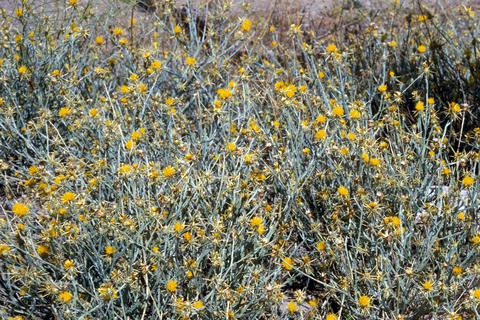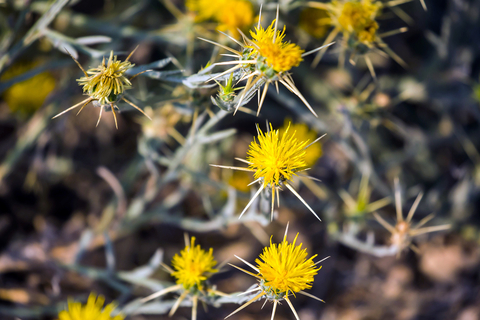Quick facts
Yellow starthistle is a Prohibited Noxious Weed (Eradicate List) in Minnesota. All above and below ground parts of the plant must be destroyed. No transportation, propagation, or sale of this plant is allowed.
- Yellow starthistle prefers open sunny areas.
- An established plant that germinates quickly under varying conditions.
- Outcompetes native vegetation for space and resources.
- Grazing animals will eat it until it bolts and develops large spines.
- Toxic to horses.
Yellow starthistle should be reported. Report yellow star thistle by emailing " Report a Pest " or calling 651-201-6684 (metro) or 1-888-545-6684.
How to identify yellow starthistle
- An annual plant that grows up to two to three feet.
Stem
- The stems of mature plants are rigid.
- They spread and branch from the base.
- Stems and leaves are covered with a loose, cottony wool that gives them a whitish appearance.
Leaves
- Rosette leaves resemble dandelions due to their lobed, flat appearance and woolly hairs.
- Leaves found on the upper part of the plant are short and narrow.
Flowers
- Golden yellow flower heads are about a half inch in diameter.
- Fertilization is highly dependent on various pollinators.
- Flowers have two inch long straw-colored spines.
- Blooms from May to September.
Seeds
- Seeds found in the center of the seed head have white fluffy hairs.
- Seeds near the seed head edge do not have white fluffy hairs.
- Seeds survive in soil for up to 10 years.
- A single plant can produce 100,000 or more seeds under ideal conditions.
Roots
- Deep taproot grows rapidly in winter and early spring months.
Reviewed in 2019




